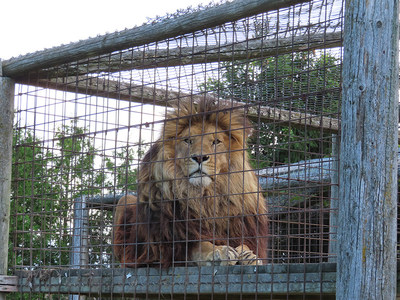Wild Animal Photography Tours You Must Experience

Table of Contents
For those who seek to capture nature’s raw majesty through the lens, wild animal photography tours offer an unparalleled gateway into the untamed. These expeditions are not mere vacations—they are immersive journeys into ecosystems where the rhythm of life is dictated by instinct, survival, and beauty. From the frostbitten tundras of the Arctic to the sun-drenched savannas of Africa, each destination promises a visual symphony of wildlife in its most authentic form.
African Safaris: The Pulse of the Savannah
The African continent remains the quintessential destination for wildlife photography. In the Serengeti, the Great Migration unfolds with cinematic grandeur—thousands of wildebeest and zebra traverse the plains, shadowed by stealthy predators. Golden hour here is transformative, casting long shadows and gilding the fur of lions and cheetahs with ethereal light.
Botswana’s Okavango Delta offers a more intimate experience. Navigating its labyrinthine waterways by mokoro canoe, photographers encounter elephants bathing, hippos surfacing, and birds in mid-flight. The delta’s seasonal flooding creates a dynamic landscape, ideal for capturing dramatic contrasts and reflections.
Arctic Expeditions: Ice and Isolation
For those drawn to stark beauty and elusive subjects, the Arctic delivers. Polar bear sightings in Svalbard are a highlight, with these apex predators roaming the ice floes in search of seals. The interplay of white fur against crystalline snow offers a minimalist palette that challenges and rewards the skilled photographer.
In Greenland and northern Canada, musk oxen and Arctic foxes traverse frozen terrain, their resilience etched into every movement. The aurora borealis, when visible, adds a surreal backdrop—an ephemeral curtain of color that elevates any composition to the sublime.
Rainforest Immersions: Verdant Complexity
The Amazon rainforest, teeming with biodiversity, presents a kaleidoscope of photographic opportunities. From the iridescent plumage of toucans to the stealthy gaze of jaguars, every moment is a study in contrast and camouflage. The dense canopy filters light in unpredictable ways, demanding technical finesse and patience.
Costa Rica’s cloud forests offer a gentler introduction to tropical wildlife. Sloths, hummingbirds, and tree frogs abound, each offering unique challenges in focus and framing. Macro photography thrives here, with dew-laden leaves and intricate insect anatomy providing endless fascination.
Mountain Realms: Altitude and Majesty
High-altitude ecosystems host some of the world’s most enigmatic creatures. In the Himalayas, snow leopards prowl rocky outcrops, their ghostly presence a coveted prize for any wildlife photographer. The thin air and rugged terrain test endurance, but the reward is profound—images that convey solitude and strength.
The Andes, stretching through South America, are home to condors, vicuñas, and spectacled bears. These species, often overlooked, offer compelling narratives of adaptation and survival. The interplay of light and shadow across jagged peaks adds drama to every frame.
Coastal Encounters: Where Land Meets Sea
Marine wildlife photography tours offer a different rhythm. In the Galápagos Islands, sea lions, marine iguanas, and blue-footed boobies coexist in a surreal tableau of evolution. The islands’ isolation has fostered fearless fauna, allowing for close encounters and expressive portraits.
South Africa’s coastline, particularly around Cape Town, provides access to great white sharks, penguins, and dolphins. Underwater photography here is both exhilarating and demanding, requiring specialized equipment and a keen understanding of aquatic behavior.
Ethical Considerations and Conservation
Responsible wildlife photography hinges on respect. Tour operators must prioritize animal welfare, minimizing disturbance and adhering to ethical guidelines. The best expeditions are led by naturalists and conservationists who educate participants on habitat preservation and species protection.
Photographers, too, bear responsibility. Maintaining distance, avoiding flash, and refraining from baiting are essential practices. The goal is to document, not disrupt—to bear witness without becoming a catalyst for change in animal behavior.
Equipment and Preparation
Success in the field begins with preparation. Telephoto lenses, weather-sealed bodies, and sturdy tripods are indispensable. Lightweight gear is preferable for mobility, especially in rugged or remote environments. Backup batteries, memory cards, and protective cases ensure readiness for unpredictable conditions.
Clothing should be functional and unobtrusive. Neutral tones help blend into surroundings, while moisture-wicking fabrics and layered insulation provide comfort across climates. Mental preparation is equally vital—patience, adaptability, and a reverence for nature elevate the experience beyond mere image capture.
A Journey Beyond the Frame
Wildlife photography tours are more than a pursuit of stunning visuals—they are pilgrimages into the heart of nature. Each destination offers a unique lens through which to witness life unfiltered, unscripted, and profoundly moving. The images captured serve not only as artistic expressions but also as testaments to the fragility and grandeur of the natural world.
In choosing to embark on such journeys, photographers become storytellers, conservationists, and ambassadors of the wild. The investment of time, effort, and passion yields dividends that transcend the frame—memories etched in light, shadow, and soul.



